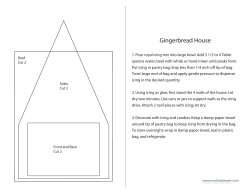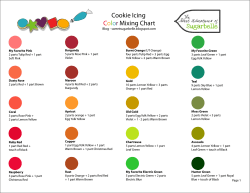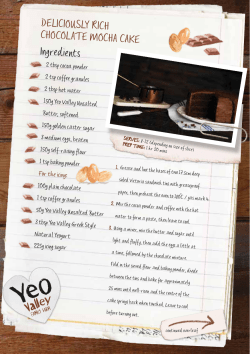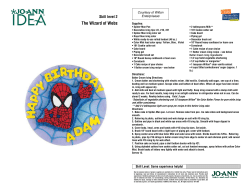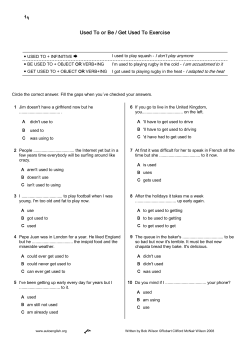
WHY THE OCCITAN CROSS?
WHY THE OCCITAN CROSS?
The Occitan Cross, also known as the Cross of Occitania has been used
as far back as 1165 as the official seal of the Counts of Toulouse.
It is now used on flags, symbols, coats of arms, logos and jewellery.
Occitania is the region in Southern France where Occitania was
historically the main language spoken, and where it is still sometimes
used, now mostly as a second language. Occitan or langue d’oc (lenga
d’oc) is a Latin-based romance language in the same way as Spanish, Italian or French.
This cultural area covers the southern half of France, as well as Monaco and smaller parts of Italy (Occitan Valley,
Guardia Piemontese) and Spain (Aran Valley).
Toulouse is the capital of the Midi-Pyrénées, the largest region in France. The flag of the region is the Occitan Cross.
HOW TO COMPLETE THE CHALLENGE
Steep yourself in all things French and complete an activity from each activity section. We have placed different
activities in Section appropriate areas but feel free to try any activity that interests you.
To order the badges, contact:
badge.toulouse.guides@gmail.com
Badges cost:
We hope you enjoy the Challenges.
Thank you for supporting our District by doing our Challenge and buying our badge
THE CHALLENGES:
Activity theme
Rainbows
Brownies
French language
Play ‘Strip Bingo’
to teach numbers 1-10
or
Learn to sing ‘Frère Jacques’
Play ‘Onze’
to teach numbers 1-11
or
Learn to sing and dance to ‘Sur
le Pont d’Avignon’
Food
Play Hunt the bean
or
Make a snail from salt dough,
modelling clay, icing, marzipan
or pipe cleaners
Play Beans game
or
Toulouse Sausage game
Violets
Violet thumb/fingerprint
pictures
or
Violet Lollipop stick bookmarks
Guides
Senior Section
Play Dance mat memory game
to teach numbers, colours or days of the week
or
Parlez-vous Français?
Learn some new phrases and try them out on each other
Make iced violets
or
Make violet felt badges
Make crêpes and try different fillings
or
Pain de France: Play ‘Baguette’
Make a violet picture by quilling
or
Try pressing flowers and use
them in a craft
Activity theme
Toulousain culture
Rainbows
Half and half: Complete a
picture of the Occitan cross
or
Play ‘Boatman’s rules’
Aerospace industry
Make a sandwich bag wind sock
or
Make flat paper places and flap
them to race them
Toulouse sport
Make and decorate a drum
using a round cheese triangle
box
or
Play ‘Coach says’
Brownies
Guides
Senior Section
Make a family or Haute Garonne shield
or
Make a Cross stitch or Mosaic Occitan cross
Make an Occitan cross with iron
on (Hama) beads
or
Play ‘Four corners’ with
Toulousain landmarks
Decorate paper aeroplanes and
race them.
or
Make an aeroplane loop from a
wire coat hanger and try to fly
the planes through the loops
Make planes from balsa wood or lollipop sticks
or
Make an aeroplane from cardboard boxes
or
Make a baking soda and vinegar rocket
Make a rugby player finger puppet
or
Ice a Gingerbread man in a rugby strip
Design your own cycling shirt
or
Set yourself a challenge to cycle
to improve your fitness
FRENCH LANGUAGE:
Play Strip Bingo:
Sing Frère Jaques:
First teach the French numbers one to ten
Give each child a strip of paper. Tell them to fold it in half, in half again,
then in half again. When the paper is unfolded there should be eight
sections. Ask the children to write eight different numbers between one
and ten in non-sequential order in each of the sections, so a strip might
read 2, 6, 1, 8, 3, 7, 10, 4.
Call out a number in French. If the number called is the number at either
end of the strip of paper it can be torn off and disregarded (so in the
example above 2 or 4). Call out another number, again if it is at either end
of the paper it can be torn off. Continue calling out numbers. You will need
to repeat numbers frequently as each time a number at the end is torn off a
new numbers become the end number.
The first person to tear off all their numbers and shout ‘Lotto’ wins.
This song is about a Monk (Brother Jack) who is asleep when the bells for morning prayers ring.
It is traditionally sung in a round.
Play Onze:
First teach the French numbers one to eleven
Girls stand up and take turns to call out numbers in sequence i.e. un, deux,
trois, quatre, cinq, six, sept, huit, neuf, dix,.. They may choose to call out
one number, two numbers or three numbers. Whoever calls out Onze is out
and has to sit down. The next person starts a new sequence from ‘un’
again.
Play Dance mat memory game:
First choose about 7 French words to learn eg. colours or days of the week).
Print or write these words in French onto cards. Divide the girls into teams.
Play ‘dance mat’ by sticking the cards to the floor. The first player picks a
word on one of the cards, says it, and jumps on and off it. The next player
repeats and chooses a card. The third player repeats the first two words
and chooses a third. Which team can make the longest routine?
FRENCH NUMBERS: 1 un, 2 deux, 3 trois, 4 quatre, 5 cinq,
6 six, 7 sept, 8 huit, 9 neuf, 10 dix, 11 onze.
Sing and Dance to Sur le pont d’Avignon:
FOOD: Cassoulet toulousain (a sausage and bean stew) and saucisse de Toulouse (Toulouse sausage) are two of the most famous dishes from our region.
Crêpes (similar to pancakes) with sweet or savoury fillings and baguettes are popular across France and 40,000 tonnes of snails are eaten in France each
year!
Play Hunt the bean:
This is a simple adaptation of Hunt the Thimble. Hide a bean and the girls search for it.
Play Toulouse Sausage game:
Teams take turns to ask one person in the
other team a question for example: ‘What
do you stir your tea with?’ Or ‘What do you
brush your teeth with?’ The person
answering must reply 'sausages' & they
can't laugh or smile. They get a point for
each question they can answer without
laughing. If the person laughs, the teams
swap roles & the other team get to ask the
questions.
Make crêpes and try different
fillings:
Play Baguette:
Each team think of a list of film titles and for each film they swap one of
the words in the title with "baguette", or if the word is plural "baguettes".
For example the film title "Three men and a baby" could be changed to
"Three men and a baguette" or "Three baguettes and a baby"
Teams swap lists and try to work out what the real film titles are.
Make snails from salt dough,
modelling clay, icing, marzipan,
or pipe cleaners:
Play Beans game:
Call out various types of beans and the girls perform the correct action.
Runner Beans - Run around
Jumping Beans – Jump
Baked Beans - Lie out in the sun
Chilli beans – Shiver
Frozen Beans - Stand still
Broad Beans - Stand with legs as far apart as possible
French Beans - Say "Oh La La!"
VIOLETS: The violet has been grown in Toulouse since the 19 th Century and is used for perfume, confectionery and baking. Violet liqueur, Crystallised
violets and violet sweets are all Toulousain specialities. In February, Toulouse holds a violet festival.
Make a Violet lolly stick bookmark:
Make a Violet picture by quilling:
Take a wooden lolly stick. You can often buy coloured ones. Cut out a flower
shape and stick on top. You could also add a leaf.
Quilling uses strips of paper that are rolled, shaped, and glued together to create decorative
designs. The paper is wound around a quill to create a basic coil shape. The paper is glued at the tip
and the coil shaped, these shaped coils are arranged to form flowers, leaves, and various
ornamental patterns.
During the Renaissance, French and Italian nuns and monks used quilling to decorate book covers
and religious items. The paper most commonly used was strips of paper trimmed from the gilded
edges of books. These gilded paper strips were then rolled to create the quilled shapes. Quilling
often imitated the original ironwork of the day.
Make a Violet thumb/fingerprint picture:
Make ‘iced violets’:
First, make your icing A basic buttercream icing works well 140g/5oz butter,
softened, 280g/10oz icing sugar, 1-2 tbsp milk and few drops of food colouring
(blue and red if you want purple violets). You could also add violet flavouring if
you can find it.
Next, Place a star nozzle into a piping bag. Fill with the icing, twist and hold the
end with one hand (usually your writing hand) and rest the tip of the bag in your
other hand. Squeeze the icing at the top of the bag to make it flow through. To
make flowers, hold the bag vertically with the nozzle close to the surface,
squeeze a little icing out to make the desired size, then to finish, stop squeezing,
push down, then draw up sharply. Add a yellow mini Smartie to the centre.
Leave in a cool place to set.
Tips: Don't overfill the piping bag. Make sure your icing isn't too thick (it will
need a lot of force to pipe), or too thin (it will run out of the bag and won't hold
its shape). Finally, don't squeeze the bag from the middle.
Make a Violet felt badge:
You will need: green and purple felt (wool-mix works well), embroidery thread
blue/purple for the flowers and yellow for the centre, a broach/ safety pin back,
a sewing needle and some scissors, and pins and paper for pattern-making
Cut a 5 petal flower shape from the purple felt. You can either cut it out
freehand, or you can make a paper pattern. Start with the yellow embroidery
thread, making about 4 small stitches in the centre of the flower, starting and
finishing on the back of your flower so you can hide your knots and finishing off.
Then use the purple thread to make stitches from the near centre out to the
edges of the petals. If you want to add a green felt leaf- join it to the flower
using these stitches.
Finally, get your broach back or safety pin, lay it on the back of the flower (or
leaf) and sew it on tightly.
Try Pressing flowers and using them in a craft:
Traditional: Flower presses are easily available and consist of two pieces of wood with a screw at
each corner. The press is filled with a sandwich of absorbent paper and the flowers to be pressed
are placed in between the layers.
If you don’t want to buy a press, you can use telephone directories, or heavy books. Make a simple
folder from absorbent paper, place the flowers into that and then slip it between the pages. Add
extra books on top to weight them down and leave to dry for around 4 weeks.
Microwave Flower Pressing: You will need: 2 pieces of hardboard or tough fibreboard about 20cm
x 20cm, 5 or 6 elastic bands about 6mm wide and 6 pieces of absorbent paper cut to 20cm x 20cm.
Lay a piece of hardboard down and cover with three sheets of absorbent paper. Place a layer of
prepared flowers on the paper and cover with the other three sheets. Put the second piece of
hardboard on top and fasten with the rubber/elastic bands with two or three along each side. Then
place the package in a microwave on medium heat for a couple of minutes. Allow the contents to
cool and then check to see if the flowers are dry - if not then replace n the microwave for a further
minute and then leave to cool - check again. Keep repeating until you are satisfied that the flowers
are dry.
TOULOUSAIN CULTURE: Toulouse is a city rich in culture and history. Famous landmarks include the Pont Neuf bridge which stretches over the river
Garonne, the Canal du Midi, Saint Sernin (the largest romanesque church in Europe) and the impressive Place Capitole. Toulouse, is often referred to as
the Ville Rose ("Pink City") because of its distinctive brick architecture.
Play Four Corners game with Toulousain landmarks:
Play Boatman’s rules:
The girls line up against a wall. One girl is the Boatman and stands in front of them.
The passengers call out “Boatman, Boatman, can we cross the river?”
The Boatman replies: “You can only cross the river if you are wearing.....” and gives a
colour, item of clothing or similar criteria.
The girls who meet the criteria can cross to the other side. Those that don’t must then run
to the other side without being caught.
The girl who is caught either swaps places with the Boatman, or helps the Boatman to
catch other people.
Name and number the four corners of the room after four places in Toulouse e.g. 1.
Canal du Midi, 2. Place Capitole, 3. Pont Neuf and 4. Saint Sernin.
The girls all run around and on a blast of a whistle they get into any corner.
The leader rolls the dice. If a 1, 2, 3 or 4 is rolled then anyone in that corner is out. If a 5
or 6 is rolled everyone is safe and anyone that has been previously out can come back
into the game.
The game continues until there is one person left in.
Half and Half:
Can you complete a picture of the Occitan
cross?
Make a Cross stitch or Mosaic Occitan Cross:
Try using the template below to cross stitch an Occitan cross.
Make an Occitan cross with iron on
(Hama) beads:
Use the cross stitch template to help you.
Make a family or Haute Garonne shield:
The symbols on shields, flags and family
crests have special meanings. For example
the ram on the Toulouse coat of arms
signifies strength.
Find out the meaning of other symbols on
http://www.fleurdelis.com/meanings.htm
and
http://www.digiserve.com/heraldry/symbols.htm
For the Tourist Office of Toulouse go to:
http://www.uk.toulouse-tourisme.com/accueil/index_en.php
Traditional mosaics were created with many small pieces of clay, glass, stone and other
hard materials which were set closely together on a firm surface to create a decorative
design or picture. There are several ways to recreate this effect:
Method 1: Copy the Occitan cross design. On the back draw a grid to divide the image
into small squares. Cut out, carefully laying the pieces in order as they are cut out.
Glue the pieces in the right order onto another piece of card, leaving a 2mm gap
between each piece. You could use a cocktail stick as a guide.
Method 2: Cut red and yellow coloured paper, card or foam into small squares and
triangles. Glue the pieces into an Occitan cross design.
AEROSPACE INDUSTRY: Toulouse is one of the major bases of the European aerospace industry. Toulouse hosts the Airbus headquarters and assemblylines of the Airbus A320, A330, A340, and A380. Toulouse is also closely linked to the Galileo positioning system, the SPOT satellite system, Thales Alenia
Space, Europe's largest satellite manufacturer, and Astrium Satellites. CNES's Toulouse Space Centre is the largest space centre in Europe.
Make a sandwich bag windsock:
Take a clear plastic sandwich bags and cut along the closed seam.
Add streamers made from strips of crepe paper or strips cut from plastic bags to the
bottom edge and decorate the sides of the sandwich bag with stickers, gems etc
Finally make two holes about 2cm down from the top edge of the sandwich bag and
add string.
Test them outside on a breezy day.
Decorate paper aeroplanes and race them:
Make flat paper planes and race them by flapping
air under them:
Cut out plane shapes and let the girls decorate them.
Race them by flapping air under them to make the cut
outs move. No touching!
Try to fly paper planes through
the loop of a wire coat hanger:
Make planes from balsa wood or lollipop sticks:
Make an aeroplane from cardboard boxes:
Make a baking soda and vinegar rocket:
The following websites have some great instructions and
paper aeroplane patterns:
http://www.amazingpaperairplanes.com/Simple.html
http://www.paperairplanes.co.uk
http://www.funpaperairplanes.com
http://www.10paperairplanes.com
Fill a plastic 1litre drinks bottle to about 2.5-3cm.
Put some Baking soda in the centre of a sheet of
Cling film.
Pull all the corners together and stick it in the
bottle.
Close the bottle. Shake for 4-5 seconds.
Loosen the bottle cap.
Throw on the ground with the cap facing down and
away from you.
Watch the rocket fly.
TOULOUSE SPORT: Toulouse has one of the best rugby union clubs in Europe (Stade Toulousain). They have been crowned Heineken Cup champions four
times in 1996, 2003, 2005 and 2010. They were also runners-up in 2004 and 2008. The club's distinctive colours are red, black and white.
As the fourth biggest city in France, Toulouse is a regular host to the Tour de France cycle race, having been a stage town 25 times.
Play ‘Coach says’:
Ice a Gingerbread man in a rugby strip:
Girls stand in a large circle and the coach stands in the middle with a ball. The coach
chooses someone in the outside circle and throws the ball to them along with a task to
perform.
You can often buy Gingerbread men, but if you want to make
them from scratch, the following recipe makes about 4: 3
tablespoons softened unsalted butter, 3 tablespoons light
brown sugar, 1 egg yolk, 2 tablespoons corn syrup, 100g plain
flour and 1 teaspoon ground ginger.
Mix ingredients together and then knead to form a dough.
Wrap the dough in cling film and chill for 30mins. Roll out on
a floured surface to about ½ cm thickness. Cut out shapes
using a cutter, place on a baking sheet and bake in a preheated oven for about 12-15 minutes. Only ice when cool!
To ice: Cut the basic rugby strip (t-shirt and shorts) from
coloured rolled fondant icing and add detail using tubes of
writing icing.
The task can be before the person catches the ball (eg. ‘Spin around’) or before they
return the ball (e.g. ‘turn around and throw the ball back between your legs.
The person in the middle must say ‘coach says’ each time they give an order. If they
forget, they have to swap around and another person becomes coach.
Make and decorate a drum using a round cheese triangle box:
Rugby matches can be very noisy and there are often people playing drums, cheering and chanting.
Here are two ways of transforming an empty cheese triangle box into a drum.
Method 1: To make a spinning drum you will need to thread a short piece of string through each side and attach a
bead at each end. Cut a small hole in the side of the box and insert a lolly stick to use as a handle. Seal around the
edge of the box and decorate.
Method 2: Seal the box and decorate with gummed shapes, coloured paper or stickers. Make different sounds by
drumming with your fingers, a pencil or a lollipop stick.
Drums don't just make a loud noise. Pound on your drum hard, then softly. Pound on your drum fast and then
slowly. How would you play the drums if you were angry? Or happy? Can you think of words to go along with the
drumming, like a chant
Make a rugby player finger puppet:
Cut a rectangle of thin white card, about the length of your hand. Draw a rugby player’s head near the top. Then
add a neck and a rugby shirt below it.
Draw a pair of shorts on a piece of coloured paper and cut them out. (Toulouse wear black shorts) Place the cut
out shorts under the shirt you have drawn and draw around them, then put them to one side. Now, draw the
player’s arms. Then draw two circles (a little smaller than a penny coin) on the shorts. Colour the player and
decorate the rugby shirt, with logos, sponsors, badges etc. Cut around the player and cut out the circles. Glue the
waistband of the shorts and stick them in place.
To make the boots and socks fold a piece of paper in half and draw a boot shape. The straight edge should be
along the fold and the top should be two fingers wide. Use this template to make a second boot. Decorate the
socks and boots with studs, laces etc. Use tape to secure the edges.
Push your fingers through the holes and put the boots on the end of your fingers. Your knuckles will be the rugby
player’s knees. Make a rugby ball and flick it to kick it.
Set yourself a challenge to cycle to improve your fitness:
Design your own cycling shirt:
Remember light-coloured or fluorescent clothing helps other
road users to see you in daylight and poor light
© Copyright 2025
